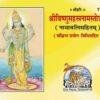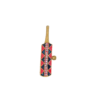Ahoi Ashtami is an auspicious festival that is celebrated with zeal and fervour in India. This particular festival is celebrated approximately eight days before Diwali and four days after Karwa Chauth. Mothers observe the propitious Ahoi Ashtami for the long life and well-being of their children. Let’s get to know more about this festival.
Ahoi Ashtami 2024 Date and Time
Ahoi Ashtami 2024 will fall on 24th October 2024 (Thursday). Given below are the important timings that you should know:
Ahoi Ashtami on Thursday, October 24, 2024
Ahoi Ashtami Puja Muhurat Start –October 24 | 9:44 AM in (New_York).
Ahoi Ashtami Puja Muhurat End- October 24 | 11:00 AM in (New_York).
Duration – 01 Hour 16 Mins
Govardhana Radha Kunda Snan on Wednesday, October 23, 2024
Sanjh (evening) time for sighting Stars – October 23 | 10:08 AM in (New_York)
Moonrise on Ahoi Ashtami –October 24 | 4:05 PM in (New_York)
Ashtami Tithi Begins – October 23 | 3:48 PM in (New_York)
Ashtami Tithi Ends – October 24 | 4:28 PM in (New_York)

Ahoi Ashtami Significance
Ahoi Ashtami is observed on the Ashtami Tithi, which is the eighth day of the Krishna Paksha (dark fortnight of the Moon) in Kartik month according to the Hindu calendar. In states such as Gujarat and Maharashtra, where the Amanta calendar is followed, this festival falls in the month of Ashwin. As per the Gregorian calendar, it corresponds to mid-October to November. As it is celebrated on the “Ashtami Tithi” or the eighth day, this occasion is called “Ahoi Ashtami”. Also known as “Ahoi Aathe”, this festival is popular in North India and is celebrated with a lot of pomp.
This festival is dedicated to Goddess Ahoi or Ahoi Mata, and women worship Goddess Ahoi with complete devotion. Earlier, on this day, mothers observed the Ahoi Ashtami fast for their sons’ well-being, happiness, and long life. However, nowadays, mothers have started observing the fast for their children’s well-being, health, and longevity. Devotees believe that women can also keep this fast if they want to be blessed with more children. It is also believed that women who face problems in conceiving should observe the Ahoi Ashtami Puja and Vrat.
The Ahoi Ashtami is quite similar to Karwa Chauth. It is a strict fasting day. Women observing this fast even abstain from consuming water throughout the day. They can only break the fast after sighting and worshipping the stars in the evening. Some break the fast at Moonrise. The sighting of the Moon on this day usually is very late in the night, so the fast is broken after sighting the stars.

Ahoi Ashtami Vrat Katha
According to the story of Ahoi Ashtami, once upon a time, a moneylender lived with his family in a town. He had seven sons, a daughter and seven daughters-in-law. Before Diwali, his daughter and her sisters-in-law went to the forest to get soil. Unaware that a porcupine (Syahu) had built its den there, the daughter started digging for mud. While doing so, her spade accidentally hit Syahu’s child, killing it instantly. The porcupine mother (Syahu Mata) cursed the moneylender’s daughter that she would bind the girl’s womb, and the girl won’t be able to become a mother.
Hearing this, the moneylender’s daughter pleaded with her sister-in-laws one by one to take the curse instead of her. The youngest sister-in-law agreed to do it instead of the moneylender’s daughter. Due to that curse, whenever she gave birth to a child, that child died within seven days. When seven sons died in this way, she called the Pandit (Jyotishi) and asked him for a solution. He advised her to serve the Surhi cow wholeheartedly.
Surhi is pleased with her service and takes her to the Syahu Mata. On the way, they both get tired, so they decide to take some rest. Suddenly the youngest daughter-in-law of the moneylender sees that a snake is about to bite the children of Garuda Pankhini, so she kills the snake. At this point, the Garuda Pankhini comes back, and after witnessing the splashed blood all over, she presumes that the youngest daughter-in-law has killed her child. So, she starts pecking the youngest daughter-in-law with her beak. When this happens, the youngest daughter-in-law says that she saved the life of her children. Hearing this, Garuda Pankhini gets very happy and takes her to Syahu Mata along with Surhi.
Once they reach, Syahu Mata is incredibly pleased with how the youngest daughter-in-law has taken care of everybody. So, she gives her the blessing that she will have seven sons and seven daughters-in-law. Due to the blessings, the daughter-in-law gets to have a big family and her home is filled with sons and daughters-in-law.
The meaning of “Ahoi” is ‘to make the untoward happen’ or “Anhoni ko honi banana” as what the moneylender’s daughter-in-law does in the story. Just as Ahoi Mata blessed the moneylender’s daughter-in-law, in the same way, the wishes of all the women who observe this fast will also be fulfilled.

Ahoi Ashtami Rituals and Pujan Vidhi
As mentioned above, the Ahoi Ashtami Vrat (fast) is similar to the fast kept for Karwa Chauth; the only difference is that Ahoi Ashtami fast is observed for children, whereas Karwa Chauth is done for husbands.
Let’s get to know the rituals associated with this festival.
- On this day, women wake up before sunrise. After taking a bath, they take a ”Sankalp” (Pledge) to observe the fast with complete diligence and without drinking water or eating food for the well-being of their children. Then they start their fast. They can break the fast only after the stars are sighted in the evening (or the Moon, for those keeping the fast till the Moonrise). On this day, Goddess Parvati is worshipped as she is the one who saves devotees from misfortune.
- In the evening, before the sun sets, the preparations for the Puja are done. Traditionally, a drawing of Ahoi Mata is made on a clean wall. Alternatively, a poster of the Goddess can also be used. The image of Ahoi Mata drawn should consist of eight corners or ”Ashtha Koshthak” as the festival is associated with Ashtami tithi. A picture of Syahu and her seven sons is also made close to Ahoi Mata.
- A holy Kalash or Karwa or pot (preferably earthen) filled with water is placed on the left side of this picture. A Swastika is made on the Kalash, and a sacred thread or Moli is tied around the Kalash.
- Rice, radish, milk, water chestnut, and other fruits are kept in front of the Goddess. Cooked food which includes Poori, Halwa, and Pua, are offered. Grains such as Jowar are also offered to the Goddess. The Ahoi Ashtami Vrat Katha (story) is narrated.
- An elderly lady of the family reads out the Katha (story) of Ahoi Mata while the other women listen. Women must hold seven grains of wheat in their hands while listening to the story or Katha. After the Katha ends, the food and coins placed before the deity are distributed to the children in the house.
- In some communities, devotees use Ahoi Mata made from silver for the Puja. This silver form is known as ”Syau”, which is worshipped with milk, akshat, and roli. After the Puja, this Syau can be worn as a pendant with two silver pearls in a thread. Women who observe this fast wear it around their necks. It is necessary to wear this necklace/garland from the moment the fast is observed till Diwali. Proper rituals should be followed to worship this garland or necklace or Mala. Water should be kept in an urn or Kalash while worshipping it. There is a tradition in some places of putting some pearls in the same thread every year.
- In some families, women keep a garland made of silver or gold coins, belonging to generations of that family, in front of the Goddess during the Puja. Whenever a new member gets added to the family, a coin is added to that garland. Every year, this same garland is used for the Ahoi Ashtami Puja.
- The Aarti is also performed at the end of the Puja.
- After completion of the Puja, women devotees offer Argha to the stars or the Moon, depending on their own traditions. They break the fast only after sighting the stars or the Moonrise.



















Add comment